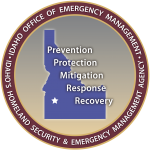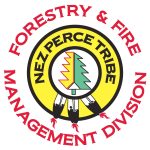
Fire Resistant Homes
Home Maintenance
Principles & Practices
WUI Culture
A fire resistant home only remains so if it is effectively maintained. Annual maintenance is key to keeping your home safe.
Make sure your chimney has an approved spark arrester. Early fall is a critical time for wildfires starting from the chimney sparks. Make sure your chimney has an approved spark arrester and have your chimney inspected and cleaned at least once a year. Keep a supply of a chimney fire extinguishing product on hand to extinguish chimney fires.
Remove all combustible materials from roofs and gutters, as well as under decks, stairways, and overhangs. This will help prevent heat from getting trapped and embers from entering these areas. Focus on the places where snow, leaves, and other debris collects around your house on windy days and keep these areas clean during fire season.
Enclose and maintain the area under decks, stairways, and overhangs with 1/8-inch wire mesh. Check for spaces that may have developed over the winter on or between your roof, siding, skylights, soffits, eaves, and windows. Plug any gaps with metal mesh or a nonflammable expanding foam product. If your home is sided with a combustible material like wood, you will want to make sure there are no openings in the siding that could harbor embers.
Screen vents and other small openings too. Small openings such as attic and dryer vents can provide a place for embers to enter your home; maintain 1/8” wire mesh screening on these and other small openings.
Your lawn and patio furniture is fuel. Flammable outdoor items, such as wicker or wooden patio furniture, cushions, doormats, window boxes and planters, garbage cans without lids, and BBQ propane tanks are all places where embers can land and start a fire. Designate an enclosed storage area to store these items when a wildfire threatens.
If it’s attached to a structure, it’s part of the structure. Flammable vegetation and combustible objects such as decks and fences can act like a fuse and lead flames directly to your house. Replace flammable fencing with nonflammable materials; if not possible, open gates to break-up connecting fuels in the event of a blaze.
Store firewood well away from your home or any other structures. Firewood should be stored at least 30-feet from structures and fuel tanks during the fire season. Burning stacks and piles of firewood generate intense heat and long flame lengths when ignited, easily spreading fire to adjacent vegetation and nearby structures.
Propane tanks. Clear plant materials from around propane tanks, which should be placed well away from your home. Also replace wooden fencing around tanks with non-flammable fencing materials such as chain link or stone or brick walls.
Have power lines buried to protect them from fire and prevent them from igniting vegetation. If burying the lines is not possible, contact your power company to make sure trees and branches are trimmed 10- to 15-feet away from lines.
Park and store boats, campers and other potentially flammable recreational equipment in an enclosed area or away from your home.

Contact Us
Mike Ward, Executive Director
director@idahofirewise.org
PO Box 220
Kooskia, ID 83539
EIN 27-2535008











